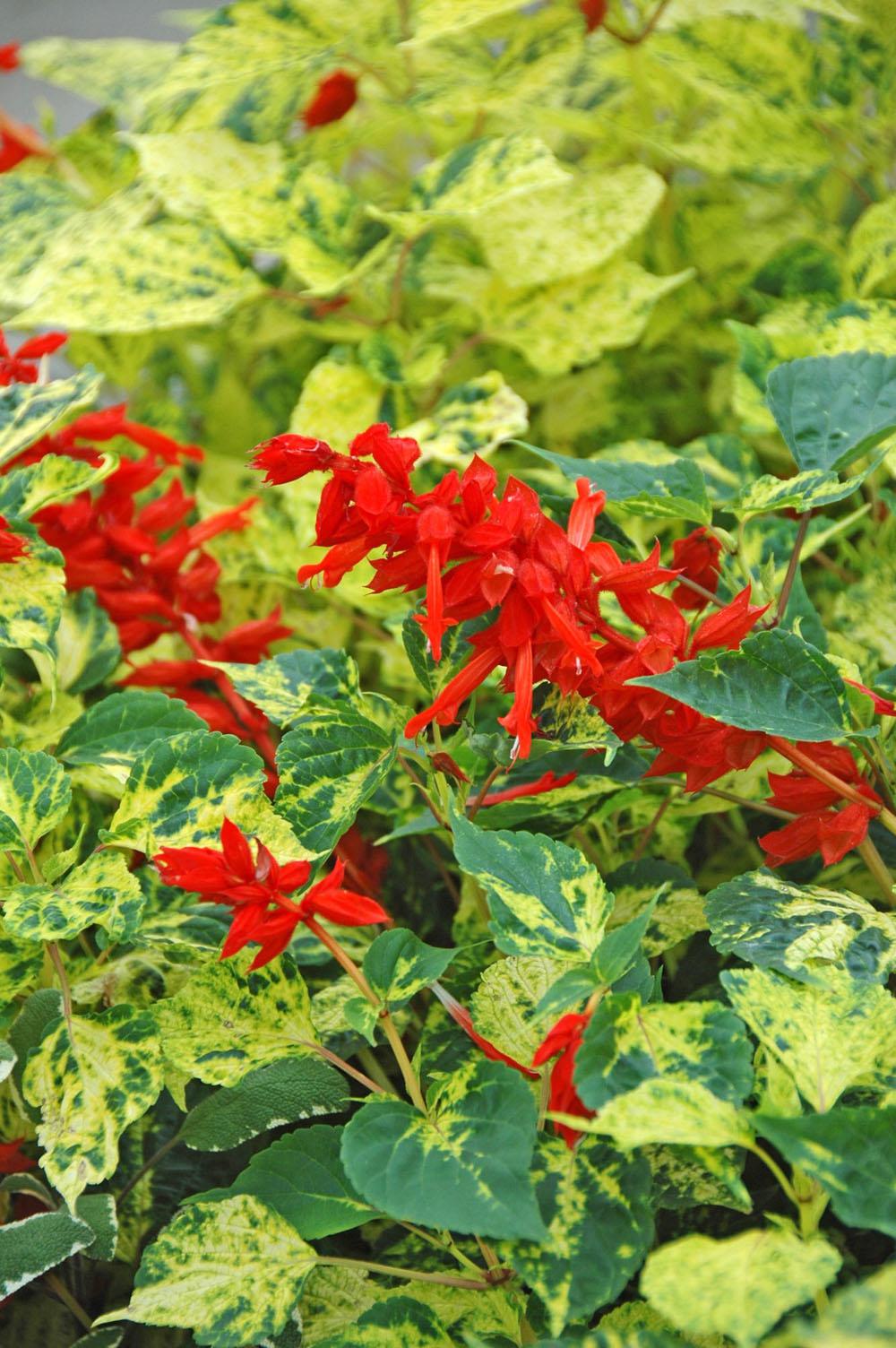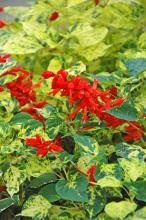Information Possibly Outdated
The information presented on this page was originally released on August 16, 2007. It may not be outdated, but please search our site for more current information. If you plan to quote or reference this information in a publication, please check with the Extension specialist or author before proceeding.
Dancing Flame salvia yield dazzling visions
By Norman Winter
MSU Horticulturist
Central Mississippi Research & Extension Center
Dancing Flame salvia lives up to its name in a couple of ways. This spectacular variegated salvia with scarlet flowers mesmerizes like a fire dancing at night.
On the other hand, it also fans the fires of taxonomic arguments. Some companies advertise this incredibly beautiful salvia as a Salvia van houttei, which some scientists claim does not exist. Then there are the catalogs that advertise it as a Salvia splendens, like our typical annual salvias, thus laying the grounds for the argument.
Is there such a plant as the Salvia van houttei or what we commonly call the wine sage? You probably don't care, and I don't either for the most part. There is just that side of me that loves to see good old taxonomic brawls.
Whether or not this South American native is perennial or annual is another fight all together. Most consider it perennial in zone 8 and higher and worthy as an annual elsewhere.
Everyone who saw this plant at the recent California Pack trials put it on their lists because of its foliage and flower. The leaves are brilliant and variegated with lemon-lime and dark green. The flowers are intensely scarlet and a delight to the darting and acrobatic ruby-throated hummingbird.
Ideal sites for the plants will receive morning sun and afternoon shade. The soil should be very well drained. Plant on raised beds or amend heavy soils with compost or humus. Remember that with many plants it is not the cold that takes them out in the winter, but cold coupled with soggy conditions. Well-drained soil may encourage it to return further north than expected.
While preparing the soil, incorporate 2 pounds of a slow-release, 12-6-6 fertilizer per 100 square feet of bed space. Space the plants 18 to 24 inches apart, planting at the same depth they are growing in the container. Apply a good layer of mulch after planting.
These are not fussy plants. Water the salvia to get it established and during long dry periods, which seem to be the norm each summer. Still, it is smart to make sure drainage is good for all salvias. Once the plant has received significant frost damage in the fall, prune to ground level and add a layer of mulch for winter protection.
Next spring, feed the plant with a light application of fertilizer when growth emerges and every six to eight weeks through September. Keep the flowers deadheaded, and give the plant a light shearing if needed to maintain bushiness.
The Dancing Flame Salvia van houttei really looks best with afternoon shade protection. The brightly variegated colorful leaves will look exceptional in combination with other lime-green plants like the Lime Zinger elephant ear and Electric Lime coleus. For flower partners, use it with the Gold Star esperanza, yellow hibiscus or allamandas.
In the winter we huddle around the fireplace with hot cocoa and dream of new plants for spring. With the present heat wave, we are all inside with frozen drinks dreaming about the first cool spell. At some point, Dancing Flame will show up at a garden center near you. Be there when it does!



